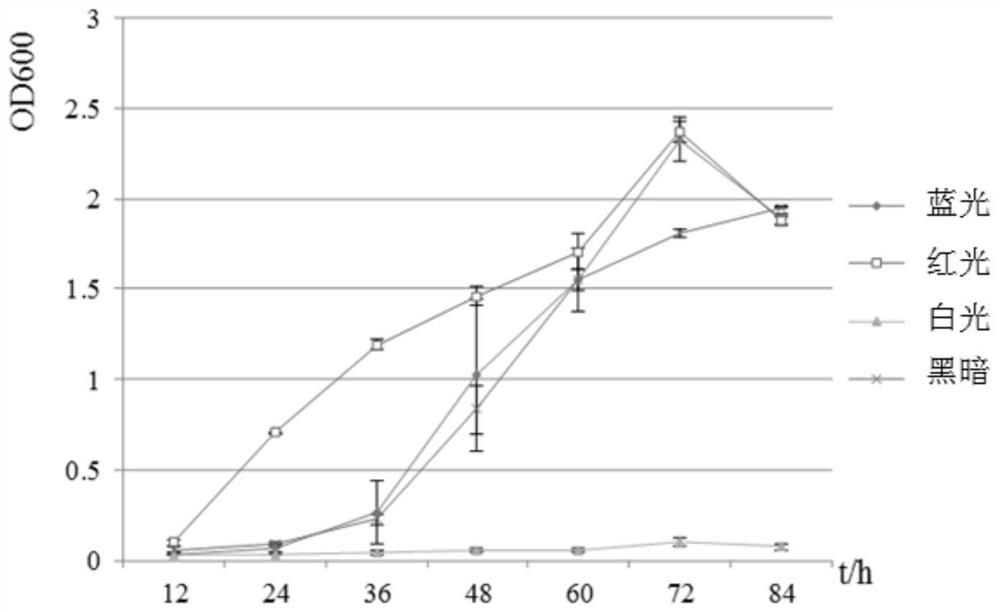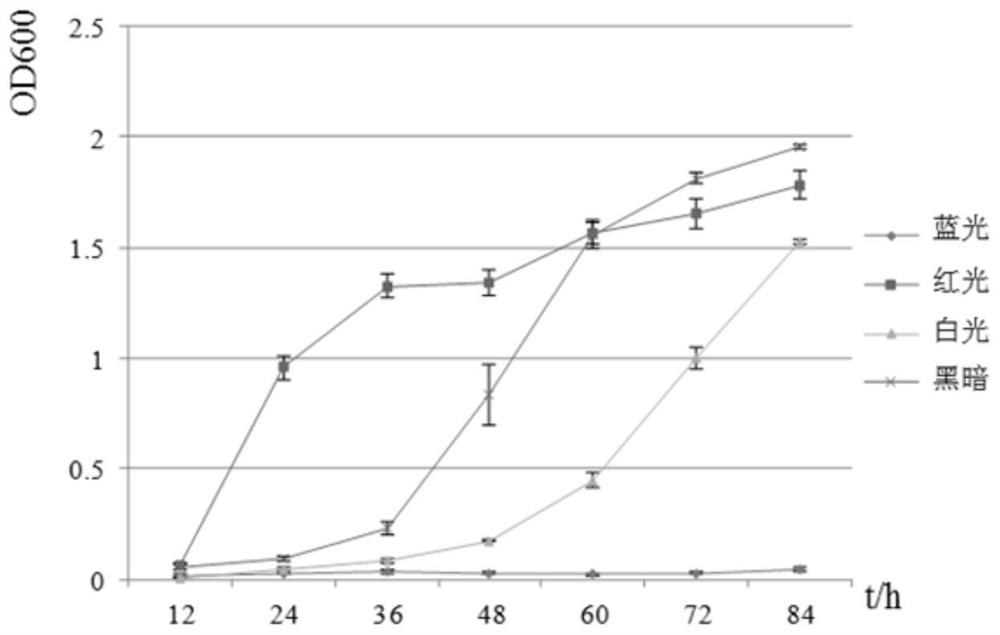A preventive treatment method for kelp albinism
A treatment method, a technology for albinism, applied in horticultural methods, botanical equipment and methods, seaweed cultivation, etc., can solve problems such as poor effect, affecting the supply of healthy kelp seedlings, breeding and production, etc.
- Summary
- Abstract
- Description
- Claims
- Application Information
AI Technical Summary
Problems solved by technology
Method used
Image
Examples
Embodiment 1
[0017] Embodiment 1: The influence of light on the growth of pathogenic bacteria Pseudoalteromonas X-8
[0018] The applicant firstly conducted an experiment on the pathogenic bacterium Pseudoalteromonas X-8 of kelp albinism.
[0019] Among them, the pathogenic bacteria Pseudoalteromonas X-8 was screened from albino kelp seedlings in a kelp nursery in Rongcheng, Shandong Province in December 2017. The counterstaining experiment proved that this strain can cause albinism in healthy kelp seedlings.
[0020] Cultured in Zobell 2216E medium, when X-8 grew to exponential phase, the absorbance of bacterial growth was measured at OD 600 (optical density at 600 nm) using a UV-6000 UV-Vis spectrophotometer (METASH). Purchase white light, blue light (400-450nm) and red light (620-760nm) two monochromatic LED light sources at Ningbo Jiangnan Instrument Factory. Set the light intensity of white light, blue light and red light to 40 μmol m, respectively -2 ·s -1 , 60μmol·m -2 ·s -1 ,,...
Embodiment 2
[0021] Example 2: Cluster Motility Analysis
[0022] Pseudoalteromonas X-8 was grown to logarithmic phase at 25°C in the dark. Subsequently, the bacterial solution was centrifuged at 6000 g for 10 minutes at room temperature to obtain a cell pellet homogenate. Use an inoculating loop to inoculate the bacterial pellet onto the bacterial solid medium. Incubate under blue light, red light, white light and dark conditions for 24 hours at a temperature of 10±1°C. Three replicates were designed for each group of experiments. The light intensity is 80μmol·m -2 ·s -1 . It was found that at 80 μmol·m -2 ·s -1 Under the conditions of , white light and blue light inhibited the movement of Pseudomonas X-8, while red light and darkness promoted the movement of Pseudomonas X-8.
Embodiment 3
[0023] Embodiment 3: Pathogen-kelp counterstaining experiment
[0024] Take out the preserved bacterial liquid from the -20°C refrigerator, absorb 1 mL into 100 mL Zobell 2216E liquid medium and cultivate in a shaking incubator. After 24 hours, absorb 1 mL into 100 mL Zobell 2216E liquid medium to continue culturing. After 12 hours, absorb 2 mL of overnight culture solution Continue to culture in 200mL Zobell 2216E liquid medium, the culture condition is 25°C, and the rotation speed is 120r / min. After 4 hours, draw the bacterial solution to measure the concentration of the bacterial solution; at this time, the growth of the bacterial solution is in the logarithmic growth phase.
[0025] Select healthy and well-growth kelp seedlings, place them in a petri dish filled with sterile seawater, and then cut the sporophytes into small pieces (1.0cm x 1.0cm) with a sterilized blade. Put the kelp tissue block into the culture plate, and add 1mL pseudoalteromonas X-8 bacteria solution ...
PUM
 Login to View More
Login to View More Abstract
Description
Claims
Application Information
 Login to View More
Login to View More - R&D
- Intellectual Property
- Life Sciences
- Materials
- Tech Scout
- Unparalleled Data Quality
- Higher Quality Content
- 60% Fewer Hallucinations
Browse by: Latest US Patents, China's latest patents, Technical Efficacy Thesaurus, Application Domain, Technology Topic, Popular Technical Reports.
© 2025 PatSnap. All rights reserved.Legal|Privacy policy|Modern Slavery Act Transparency Statement|Sitemap|About US| Contact US: help@patsnap.com



